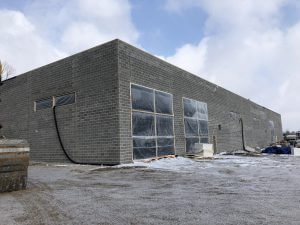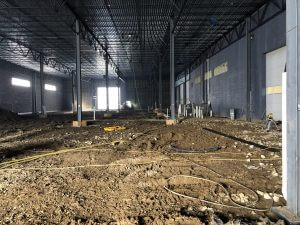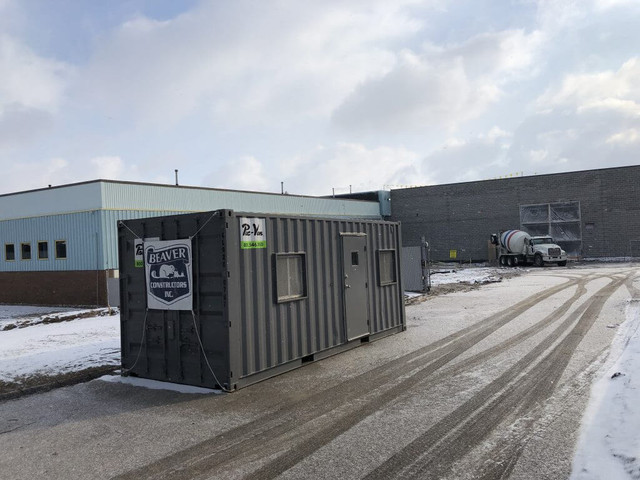Beaver Constructors Inc. and United Architectural Metals: Thaw it, dry it, pour it!
Posted by Matt Milos on Apr 5th 2019
Few things are more gratifying than a well-executed plan.
On the heels of our discussion on large sub-base drying a few weeks ago, we've witnessed another example of how hydronic systems make navigating the muddy waters of spring-time construction (pun intended) that much easier.

Deep frost can delay a concrete pour, but so can ground water once that frost melts.
Lash Kindred of Beaver Constructors Inc. contacted us a few months ago.
His fast-track addition already had standing walls but the roof was not scheduled for completion for another couple weeks. This meant that the 40,000 sq ft area, which still needed a concrete base, was wide open. As we know, an uncovered sub-base is subject to the effects of weather, including frost.

A wet sub-base is just as much a threat to a concrete pour as a frozen one.
Kindred's first priority, then, was to thaw out the sub-base so the team could finish rough grading. But, as these things often go, solving one issue leads to yet another. Whether his team used a ground-thaw system or waited for natural conditions to thaw the ground, one problem remained: water. They could solve this problem a handful of ways, including adding stone or simply waiting for the ground to dry.

Beaver needed a fast solution to remove water from the sub-base.
The best option? Exactly what the Beaver team decided to use: hydronic climate control.

Hydronic heat was the perfect way to simultaneously heat the job site and dry the sub-base.
Running two PowerHeat 300 units on the natural gas supply from the existing building, the team was ready when the frost melted a week later. Unlike a traditional direct-fired system, the hydronic system removed moisture instead of adding it. After just one week the building was dry enough to finish grading, with pours beginning a few days after that.

Beaver managed to dry out the sub-base without resorting to regrading or simply waiting.

It's an impressive feat to see this much progress in such short period, especially this time of year. We extend our hearty congratulations to the entire UAC Beaver team on their flawless execution of a well-thought-out plan. Thank you for including us in the process.



